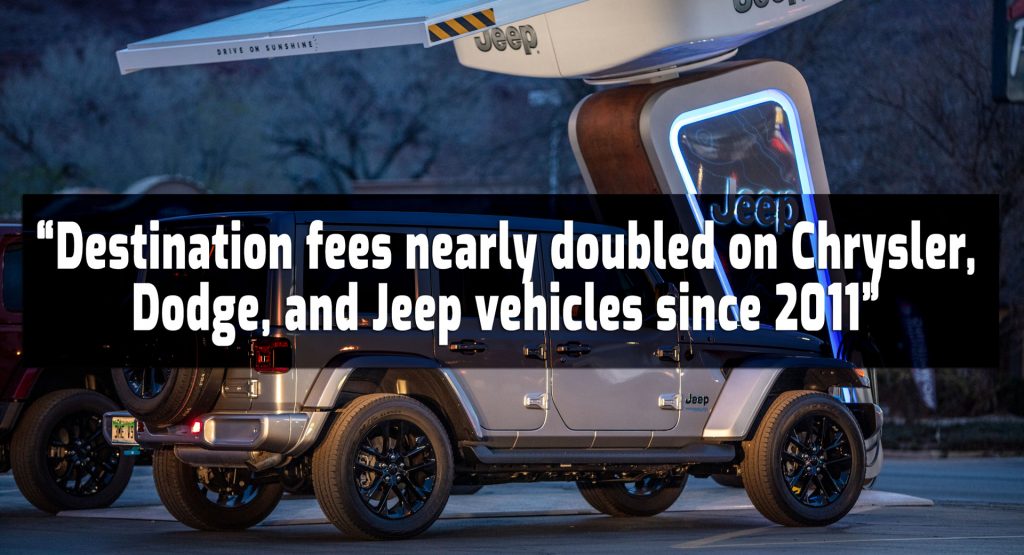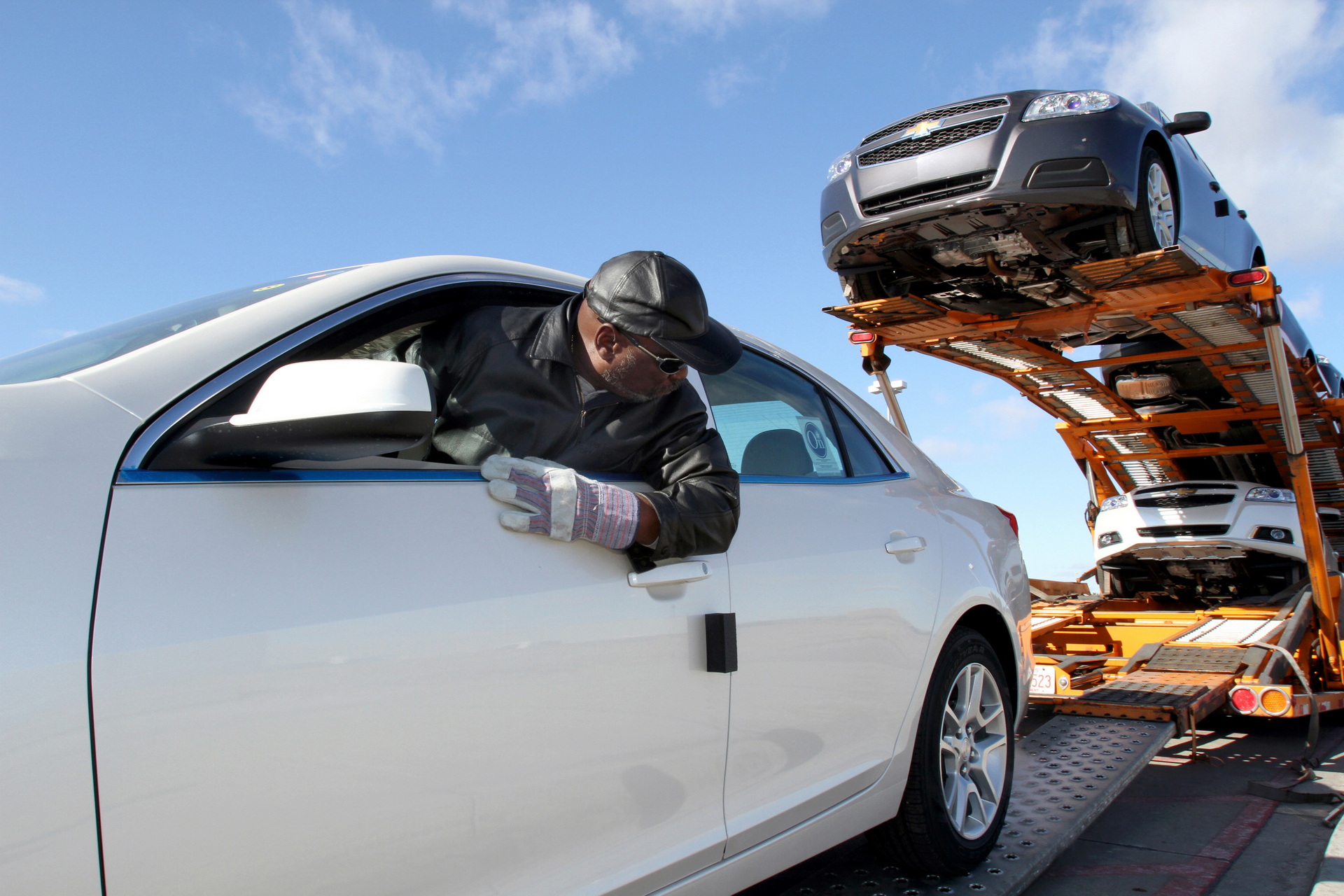Destination fees have actually been getting more and more coverage lately, which is why it surprised even me – someone forced to look at destination fees across the industry with some frequency, to discover that they’re increasing so quickly..
A recent Consumer Reports study finds that destination fees across the industry have risen more than 48% in the last ten years. The worst brand for increasing fees is easily Stellantis.
Since 2011, destination fees for Chrysler, Dodge, and Jeep vehicles nearly doubled. Ram’s destination fees have risen 75% and Jeep’s rose 50% in just the last three years. Since 2012, Fiat’s destination fees have risen 114%.
Indeed, America’s big three have been driving up the prices of their destination fees the most. In CR’s research, Ford and GM both charge more than $1,100, while Stellantis charges more than $1,500, on average.
Not all companies have been quite so aggressive with their increases. Premium automakers, surprisingly, have been relatively well-behaved. Volvo, Mercedes, Lincoln, Lexus, Infiniti, BMW, Audi all increased their delivery fees by less than 20%.
All of which leads to the inevitable question of why? The answer is difficult to find. When it reached out to automakers, many ignored CR’s question altogether. But most responded vaguely, saying the fee was calculated as an average of what it costs to send cars to dealers nationwide so that no one market is paying more than any other.
As to why the prices are expanding, Ford offered that it was because of the shift to SUVs and pickups, fewer of which can fit onto a transport vehicle. Still, no one will offer their formula so that it can be investigated.
Those answers, though they may explain some of the reason for the rapid increases, don’t account for the vast differences between automakers and don’t explain why Audi, which has no factories in the USA and whose most popular vehicle is the Q5, saw its destination fee increase just 10% while Jeep, which produces many of its vehicles in the US and has only ever produced SUVs, saw fees rise 50% in the last three years.
Indeed, Consumer Reports is calling for more transparency from the industry, which I think is a great idea. It also leads me to wonder if we’re reporting on destination fees correctly.
A number of outlets include the destination fee in the price of new vehicles. It’s a reasonable and well-intentioned tactic. Destination fees are an inevitable part of the car’s price so why should automakers be able to quote an MSRP that it’s impossible to pay? But does that obscure the speed at which this pernicious price is rising or is it the only way to keep in check, what do you think?







